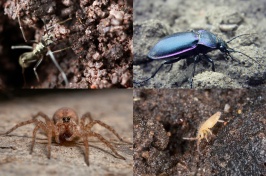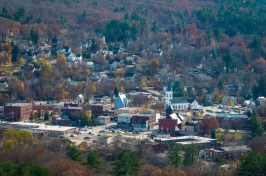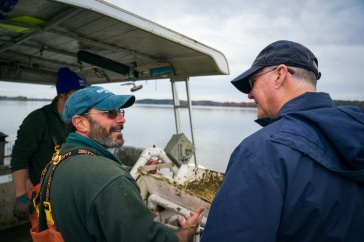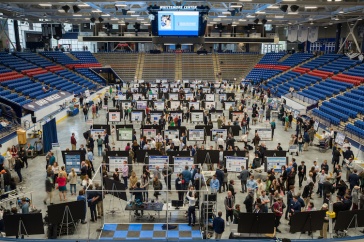
UNH researchers have collected new data that show a significant increase in the rate of native oyster larvae decline in the Great Bay Estuary (GBE) as well as a marked shift of oyster spawning to earlier in the year. The new findings will aid oyster restoration in GBE and support ongoing efforts to understand the ecological changes taking place in the bay as the result of disease and habitat loss.
The research, which has been published in the Journal of Shellfish Research, is part of a Hatch-funded study to determine whether enough oyster larvae is being produced in GBE to sustain the oyster population.
“The continued decline of the oyster population is putting the health of GBE ecosystem at serious risk,” says Alyssa Stasse, UNH doctoral student and the paper’s lead author. “Their numbers are dramatically dropping, and we haven’t pinned down exactly why. It seems like there are a number of influences.”
Stasse began studying the GBE oyster larvae population in 2020. Along with Bonnie Brown, professor of ecological genetics and chair of the department of biological sciences, Kelsey Meyer, a master’s student and coordinator for the NH Shellfish Farmer’s Initiative, and Matt Cheng, a marine, estuarine and freshwater biology major who graduated in 2021 and is now working on his master’s degree at the University of Alaska, the lab began measuring the number of oyster larvae in GBE.
With help from Jenn Dijkstra, research assistant professor at the Center for Coastal and Ocean Mapping, which is part of UNH’s School of Marine Science and Ocean Engineering, and Alix Laferriere from The Nature Conservancy, they paired the collected information with aggregated NOAA buoy data on water temperature, salinity and pH.
The researchers also worked with local oyster fisheries to compare how the native populations were doing alongside the cultivated oyster species, which tend to be heartier and more disease tolerant. Krystin Ward, owner of Choice Oysters, LLC of Portsmouth, and Laura Brown, owner of Fox Point Oysters, contributed to the sample collection efforts by allowing larval sampling in the area surrounding their farms.
Stasse says conditions that are resulting from climate change like warming water, disease spread and habitat loss are likely the main reasons for both the rapidly increasing rate of larvae decline and the altered timing of oyster spawning.
“With climate change, new pathogens are entering the water and conditions are shifting,” she says. “This is exacerbated in the Gulf of Maine, whose watershed includes the Great Bay Estuary, where waters are warming faster than 99 percent of the rest of the ocean.”
The data the team collected will be used as a new baseline to help conservationists target their oyster restoration efforts to times of the year and to areas most conductive to success. According to Stasse, the work is also steppingstone to further research on the reasons for oyster declines in GBE.
As part of the larger Hatch-funded project, the researchers created a Great Bay oyster observation program to map native oyster locations, model disease within the native populations and examine the native oysters’ overall health.
“Oysters are particularly important to estuaries like Great Bay because provide important ecosystem services: they help to keep the water clean and promote cycling of nutrients through the ecosystem,” says Brown.“Our ultimate goal is to provide a mathematical model of larval transport throughout Great Bay that will help us to predict where larval settlement might be greatest. That way we will know where the best places are to create artificial oyster reefs.”
For Stasse, she’s proud that her work is bringing us closer to understanding how these important bivalves are affected by changes to their ecosystem and what can be done to reverse their decline.
-
Written By:
Ryan Wilmot | UNH College of Life Sciences and Agriculture


















































